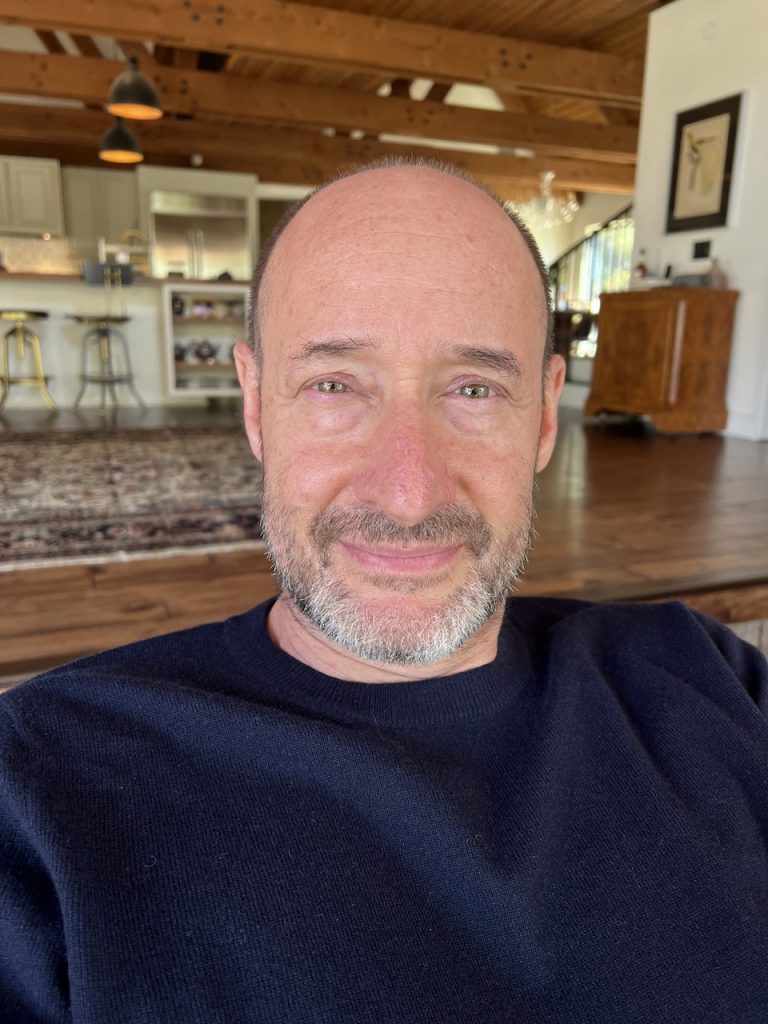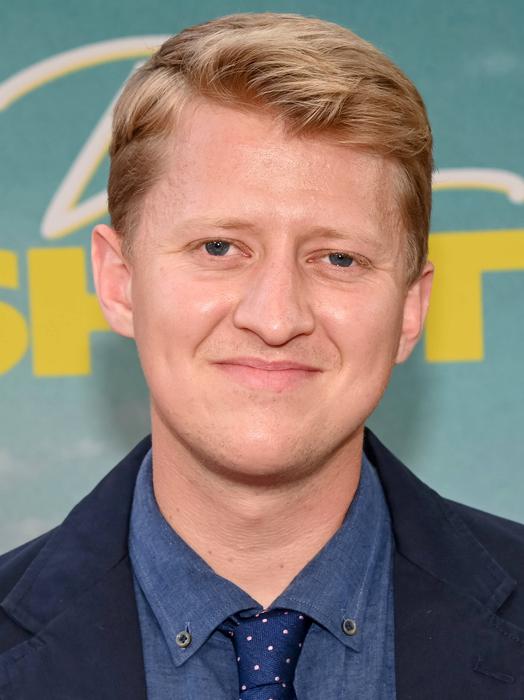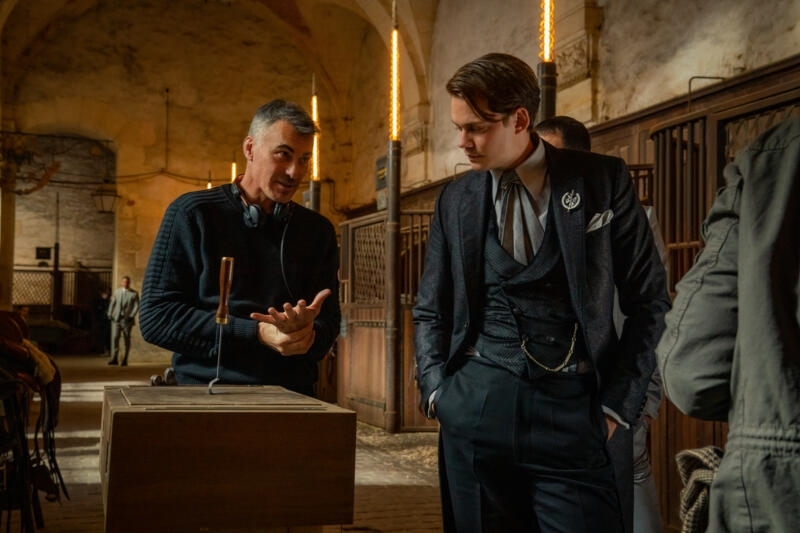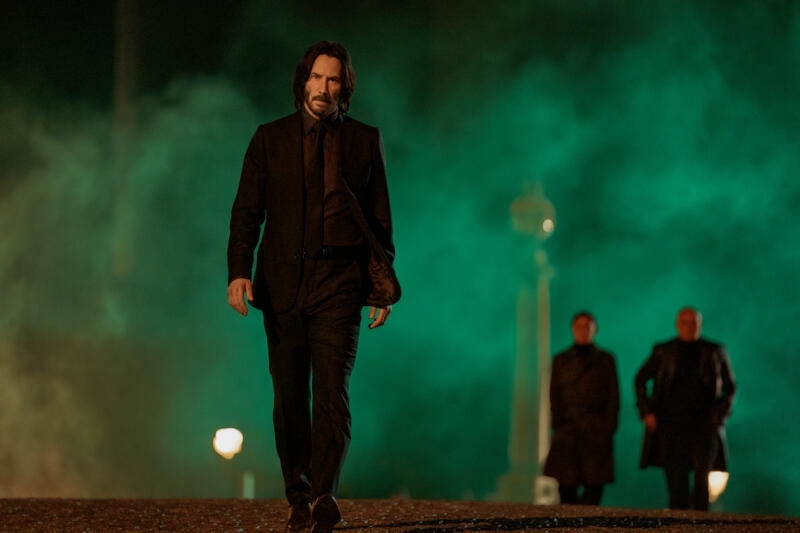The John Wick saga unfolds in chapters. Each movie is a trice of the Baba Yaga in survival mode. With fight sequences that are as well choreographed as the best ballet routines, breathtaking locales, and punchy dialogue, this is a series that outdoes itself with each movie. It’s like we’re climbing the Helix Staircase of the Loretto Chapel with Wick. What he’s doing and survives shouldn’t be possible, but it is. The series keeps us guessing and is a beautiful, fearless homage to the durability of the motif of the lone assassin hellbent on revenge.
John Wick is the supreme assassin. A man with an almost supernatural endurance and concentration. The essence of his motivation for his revenge is love and this shatters his Boogeyman mythos by making him definitively human.
The latest entry in the franchise is John Wick: Chapter 4. Keanu Reeves returns as the formidable man in black, firing on all cylinders as he tries to defeat The High Table and win his freedom. His character is a man of few words, but Reeves is as magnetic as ever as this avenging angel who’s part gunslinger, part martial arts wizard.
In this chapter, he has a more than a few worthy opponents, including the wily Marquis, played by a riveting Bill Skarsgård, and a cool-as-ice Donnie Yen as Wick’s friend-turned-foe Caine. Yen is mesmerizing, seemingly preternatural with the grace and stealth of his fighting moves. Laurence Fishburne returns at the Bowery King, Ian McShane as Winston and Lance Reddick as Charon. Shamier Anderson, Hiroyuki Sanada, and Rina Sawayama round out the stellar cast. Director Chad Stahelski remains at the helm, a master at work.
John Wick: Chapter 4 writers Shay Hatten and Michael Finch talk with Creative Screenwriting Magazine about contributing to such a popular and robust franchise.
Shay, you started out as Robert Downey Jr.’s writing assistant. What do you feel you learned from that that helps you as a writer?
So much! For one, it was thrilling as a kid from Idaho who came here for an internship and got thrown into a room with Ironman. It was unbelievable and surreal. One of the main things I learned from him is that he’s a genuinely decent, kind guy. I learned you could be that famous, that successful, and still be kind to the people around you and still be a cool, creative mind. What was so thrilling about him was that he was still trying to explore his passion projects. I got to sit in a room with him and see him unleash his wildest ideas. That was a cool lesson…. let your imagination run as far as it’ll go.
How did you get started as a screenwriter, Michael?
It was so long ago, I can hardly remember! My parents had been writers many years ago and have since retired. I think I saw them wandering around the house doing nothing. It seemed like a good way to make a living! I went to college and started writing, very poorly initially. I went to law school and got paid to do something first semester. I had the choice of paying to go to school or getting paid to do this. I chose the latter.

Michael Finch. Photo by Alexia Brown
What do you two think is beneficial about working with a writing partner as opposed to writing solo?
Michael: We’re no ampersand. Shay started this process, and I finished it. We don’t even like each other, to be perfectly honest…! (laughs)
You did a polish, Michael?
Yes, I essentially did a rewrite on Shay’s work.
What do you think are the important ingredients of a rewrite?
Michael: It differs depending on the material on hand. With this one, the script was very solid and so was the story. More importantly, it was built on a very specific and solid base, which is this franchise. Writing John Wick is an exercise in not doing exposition. It’s showing, not telling. The fun of it is understanding how this process works with Chad [Stahelski] and Keanu [Reeves]. It is their franchise. We’re squatting here essentially, we’re paying a visit. These guys have created a world, a set of characters, and an attitude… and not just an attitude for the film, but an attitude about the work ethic. Either you’re all in or you’re not in as far as they’re concerned.
They only have on speed and that is to go. It’s incredibly enlivening and energizing. If you have any doubt, it’s incredibly innervating and you’ll fall off the path. I think Shay and I both benefitted from having this base of John Wick 1, 2, and 3. These are not for you to play, these are opportunities. We also benefitted from being able to take the existing war, which is very thin because they’re just moments in time in John Wick’s life. You see this movie from over his shoulder. All three movies are just moments in this journey, and we were able to take those moments and build on them, under the guidance of Chad and Keanu, particularly Chad. He knew what types of sequences he wanted. Once you have that, you start putting it together towards some type of cogent narrative around those sequences, recognizing that the entire franchise doesn’t follow a classical narrative structure.

Shay Hatten. Photo courtesy of Lionsgate
How did you get attached, Shay?
I came aboard the franchise about five years ago. While I was working for Downey, I’d written this spec script that literally was inspired by the trailer for John Wick: Chapter 2. I wrote Ballerina, which was its own standalone thing. John Wick producers read it and thought it seemed like a John Wick movie, They acquired it and turned it into a spinoff film, which many years later is finally being made. On the third movie, he was looking for a guy to come in. That’s how I was brought in. I came in on the third movie, clung to it through production, then rolled along to here and Ballerina.
Michael, I heard you say in an interview that you’d sometimes have nine hour meetings with Chad and Keanu. I would imagine that was the same for both you and Shay… extensive meetings. How did that affect your writing routine, as opposed to your normal routine?
Michael: It doesn’t affect the actual writing or the way you write. It simply focuses you. You realize these guys actually care. Chad puts everything into these films, and it shows. Same with Keanu. I firmly believe that when he puts that suit on, he believes he is John Wick. That is infectious…. contagious. When the other actors show up, they tend to get all in because they know Keanu is. It was the same for me and Shay in the writing process. The first meeting I had with Chad and Keanu lasted ten or eleven hours. There were eight or nine more meetings and not one was less than nine hours.
You have the benefit of Keanu sitting there and doing the scenes, reading as all the characters. If he likes it, he’s literally giggling in the chair, If he hates it, he’s got his head in his hands saying “We need to redo this.” It makes you step up your game.
Shay: I think there can be a perception that popcorn action movies aren’t as serious, but that couldn’t be further from the truth with this movie because Keanu treats this with life and death seriousness. That is one of the most important lessons I’ve learned as a writer. Seeing how much he cares inspires you as a writer because you don’t want to let him down.
Michael: Neither of those guys will compromise and that’s really incredibly powerful.
What do you think sets this action franchise apart from others?
Shay: I think it’s the special tone of it. The world has a heightened wink and nod to it…. a little bit of humor and subversiveness to it, which I think comes from Chad and the way that he choreographs action in the world building. But at the center of it, you have Keanu, who takes this character seriously. It’s an emotional journey. As an audience member, you’re on board with him. You’re taking the journey seriously but because of the world he’s in, you also get the fun and escapism of the worlds. I think those two things combined give it a special tone.

Director Chad Stahelski Director Marquis (Bill Skarsgård) Photo courtesy of Lionsgate
Michael: I think it works partially because it takes itself seriously. We’re treating the audience like adults. We’re not setting you up with vast amounts of exposition to establish the world. We’re dropping you in and you best catch up and go along for the ride. That puts a lot of pressure on the filmmaker to make it entertaining in the moment, in every moment. But it’s also incredibly freeing. It is truly a motion picture, not a talking picture.
How did you decide which adversaries to introduce?
Shay: I think with Bill Skarsgård, you want a great villain. Someone who will stand up to John Wick. We wanted someone who embodied The High Table and posed a real scary threat. So, that’s how that character came about. We wanted someone who represented the existential threat of the bureaucracy of The High Table. You also want some you respect and have a bit of affection for to see John on the ground with. That was the process in building the Donnie Yen character. He’s someone John respects because they’re both doing it out of love. Combined, they make a really cool duo.
Michael: What also appeals to me about the Marguis, the Skarsgård story, is that he’s the hero of his own story. This guy believes he is correct. He thinks John Wick is a cancer, an abomination. At the same time, the Marquis is a little corrupt, venal, sadistic. That makes for one type of character. Then you have Caine’s character, Donnie Yen’s character. He’s essentially stuck in the same boat as John, fighting for something he loves. Part of the reason we have Donnie’s character is to see what would have happened to John at the end of Chapter 3 if he’d taken the Elder’s deal. He would have essentially become Caine. Caine recognizes this. Everybody in this world, by virtue of association with the Table, is desperate. They’re all drowning, trying to figure out a way to keep their heads above water, trying to figure a way to get out. The problem is that once you sit down at the table, you’ve already lost. It’s Hotel California. You can check in, but you can’t check out.
Who’s above the Marquis?
Michael: That is to be determined. The redactive nature of this story is not telling you. The Table can be many things. Shay probably has a different opinion of this, but I see it as an Orwellian bureaucracy. That fact that you don’t know where it begins or where it ends is what makes it interesting.
Shay: I think it’s cool that there’s no one person that John could kill to get out. You take out The Elder, they’ll replace him. And so on. Every member around the Table is dispensable and that speaks to the endless nature of this machine. The feeling that John feels so trapped is what makes us relate and empathize. There is no escape to some extent. All of our characters are trapped in different ways.
Off the cuff, if you had to come up with a John Wick origin story, what was he like as a kid?
Michael: I’m going to defer to Shay on that one…! There’s nothing but landmines there!
Shay: Here’s what I’ll say. I have my theories. But I think what’s so cool about this franchise is that everyone can have their different theories and there is no one answer.
Michael: If you can walk out of the theater asking that question, we’ve won.

